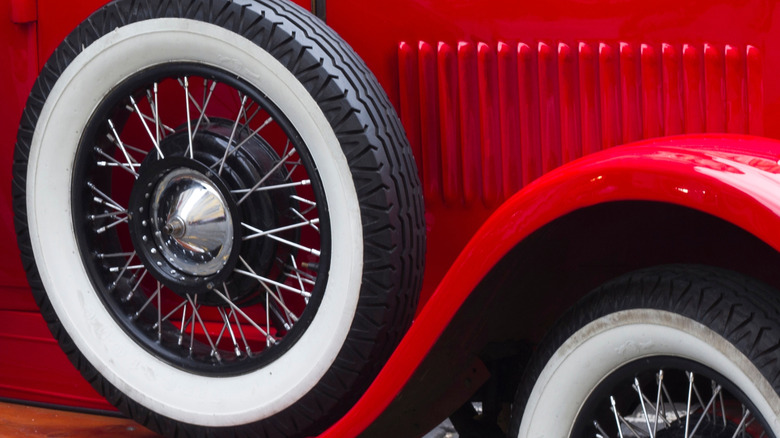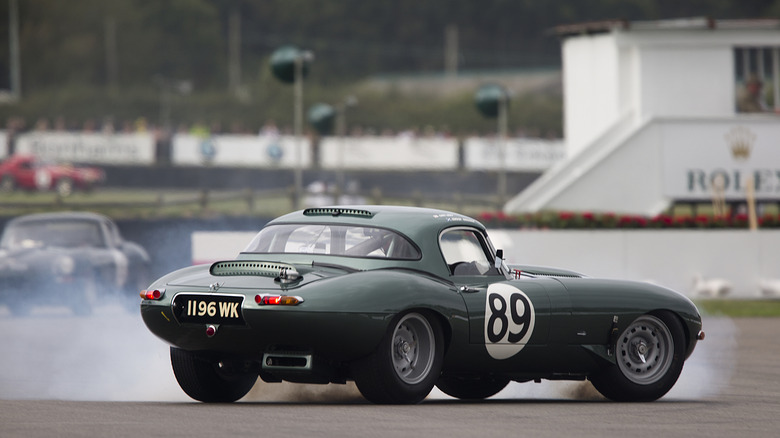Classic Car Tires: Which Brands Make Them And What Type Should You Choose?
There are a variety of reasons why people select particular tires for everyday driving, whether it be seasonal, performance-oriented, all-terrain, off-highway usage, and so on. But what about classic cars? When you go to a car show and see a restored '58 Cadillac sitting on whitewalls, those tires likely aren't actually from the '50s. Rubber is a perishable item, and after many decades, it'll grow brittle and develop cracks before fracturing. Even 6-10 years is a stretch for many automotive tires, so where do these owners find them? Who still makes tires for classic and antique cars, and if you end up owning one, which one's best for you? Luckily, there are actually quite a few companies still producing them, and for all sorts of different applications.
Generally speaking, there are two types of classic tire companies. You have the big names like Pirelli and Vredestein, for example, which produce legacy tires for European cars like Jaguar, Porsche, and MG. And you have specialized vintage tire companies like Coker, well-known for their licensed replica tires from Goodyear, Michelin, BFGoodrich, and so on. It's a surprisingly diverse and affordable market as well, even more so for popular models to daily-drive like classic muscle, Volkswagens, and classic imports.
As for which tire you select, that'll likely depend on two factors: the looks and the contact patch. Most classic cars didn't have power steering, so the less rubber contacting the ground, the easier it is to steer. Of course, there's the traction trade-off as well. Plus, some companies produce tires with specific looks, like Firestone whitewalls and redlines, or Goodyear Eagle white-letters.
Getting a better grip
If you look at a classic car tire in comparison to a modern one, you'll notice that they're generally thinner and with far higher-profile sidewalls. And that's not by accident – let's take a look at the suspension geometry of your average classic car. Most of your average everyday cars were body-on-frame, like the Chrysler and GM B-body, or early unibodies like the Mustang. Most of these cars didn't feature any power steering and were originally designed to accommodate a certain level of body roll, hence the more rounded sidewall appearance. Fitting modern low-profile rims and tires without any other modification will certainly improve traction, but it'll also give you quite the workout driving through a city.
Another factor to consider is the level of technical advancement featured in today's tires compared to the beginning of the 20th century. We've gone from solid rubber to air-filled tubes, tubeless, bias-ply becoming radial-ply, and many other innovations, not to mention the development of better tread patterns and rubber compounds. So more often than not, even tires built specifically to replicate vintage or antique looks provide adequate traction for everyday or even high-performance driving. For instance, classic racing series and events where these cars race typically field new-production tires with period-correct tread patterns.
Modern replicas generally combine the best of both worlds, offering the traction plus the original handling characteristics inherent to the car. So whether you're attacking a circuit in anger or just daily-driving it, you'll likely be fine without any drastic alterations from the original design.
Looking sharp
Obviously, classic car tires aren't a one-size-fits-all affair. Some cars featured whitewalls or even off-white natural rubber, while others had redline tires, white lettering, and so on. Different manufacturers produce certain tires that replicate these looks, often right down to featuring the original logos and tread patterns. Places like Coker assemble such reproductions for everything from classic race cars to military trucks, using licensed replica designs from manufacturers like Firestone and BFGoodrich. Oftentimes, you can find the exact manufacturer of the car's original tire, an essential factor for a 100% correct restoration. Car shows typically award points for period-correct tires as well, but that doesn't mean you need the literal original tire; it's understood that these are perishable items that need to be replaced. But even antique bias-ply tubes and natural-rubber tires are available for reasonable prices.
Some cars feature multiple tire types, such as muscle cars with optional sidewall patterns like redlines. Others had differing whitewall widths depending on the year, with whitewalls generally larger the further back you go. In those cases, it's best to either check the original invoice or other identifying information to see what your car came with from the factory, to make sure your car is as original as possible. If such looks don't concern you and you're after the traction afforded by a modern tread pattern, there are various manufacturers like Pirelli that update vintage sizes for various popular models with modern tread and compounds that are perfect for daily driving your classic car.


